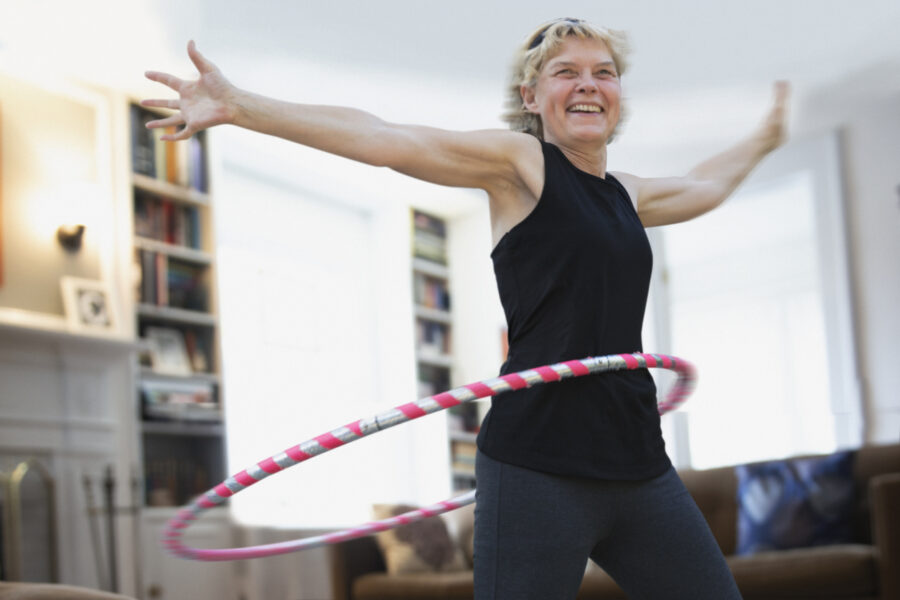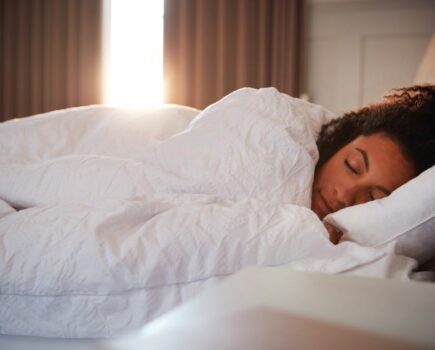It’s fast becoming one of the biggest fitness trends of the year. But can hula hooping help you shape up and feel amazing?
Cue the music (we recommend some Kylie Minogue) and get ready to spin right round: hula hooping is the next big fitness trend that should be on your radar.
Searches for weighted hula hoops went up by more than 300% this year, as people looked for fun at-home workouts that can be done with minimal equipment. It’s growing so quickly in popularity that PureGym named I the world’s fastest growing fitness trend of the year for 2022. That’s quite a backing. So why are we in a spin (pardon the pun) about it?
Well, let’s start by saying it’s brilliant for your core muscles. That’s not even getting to how the whole area of your waist, abdominals, hips, pelvic floor and lower back can respond brilliantly to regular hula hoop workouts.
“Hula hooping can not only tone muscle and build stamina and endurance, but can also improve flexibility and joint mobilisation,” says PT and yoga teacher Carly Navin.
“It’s the nostalgia element that adds to the fun and I think that’s a big part of the reason hula hooping is being rediscovered as a workout. If the past few years have taught us anything, it’s that we need to find pockets of joy where we can. And adding that joy into a workout – what more could you want?”
Looking to get started? Once you’ve bought your hoop – prices start around £20 on Amazon – take it slowly.
“Build up the time you hoop. Going too fast, too soon will lead to injury,” says Carly. “Make sure you have enough space, as you don’t want to be damaging the TV or knocking pictures off the wall! Clear space, give yourself time and give it a go.” If you need inspiration, there are plenty of workouts on Youtube to choose from.
As you perfect your technique, challenge yourself to hoop in the opposite direction to the one you prefer. Doing so will give you a better all-round workout and it can really boost concentration levels, and whittle your waist, too.
Carly continues, “You may enjoy hooping from the start and want to get straight into a longer session, but avoid hooping without warming up the joints and muscles. Injury prevention is key, whatever the exercise.
“If you have super tight hips, I would recommend paying particular attention to stretching before you begin. If the hips are stiff with not much movement, hooping may ask a lot more of other areas, like the back, to compensate. Always check with your GP if you’re worried.”
She continues, saying, “Hula hooping may be really useful for strengthening and mobilising the knees, if yours are a little weak. Often bad knees come from lack of hip mobility, which hula hooping can improve. Standing still to begin with means less movement from the knee, as your hooping progresses and starts to challenge you in different ways, that will build up the knee joints and surrounding muscles.
“Most importantly, have fun with it. Don’t think about calories or focus too much on technique. There’s no better exercise than one you enjoy (and that doesn’t feel like exercise). Hula hooping definitely ticks those boxes.”








